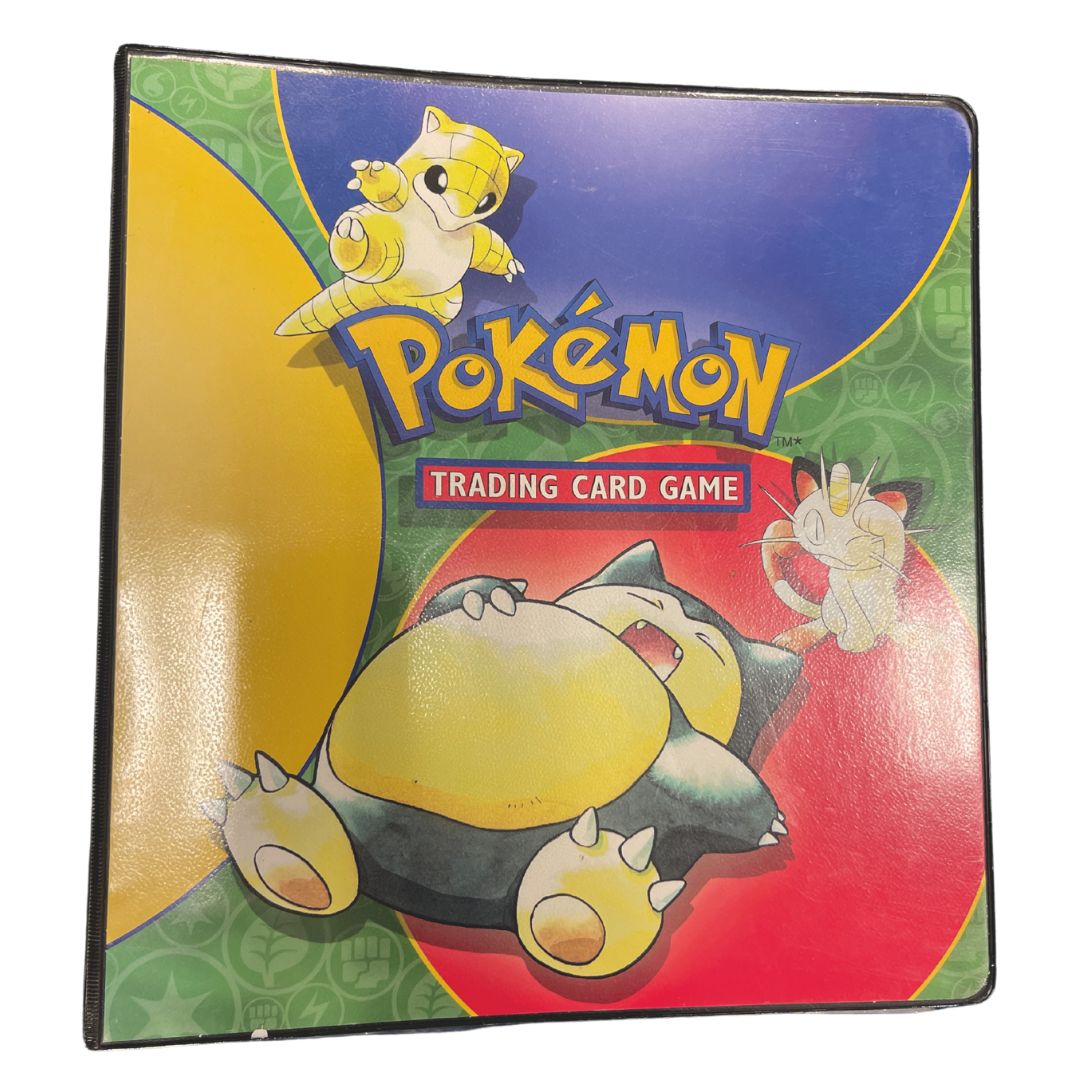10 June 2025
|
This month, we’re taking a look at what to do with what you find in your attic – with the example of a common discovery: early Pokemon cards. Written by Charlie Pettit
Last year, a friend of mine was remodeling her house, and changed the heating system from a hot air system to modern central heating. As they removed the insides of the system, they made a surprising discovery – a handful of base set Pokemon cards.
We guess someone originally stored them in the loft, and at some point, they dropped through from an unknown cubby hole. Still, the story is a variation on a familiar one.

After the absolute craze of Pokemon cards and video games, most people had at least a few. As we reminisce on the fact we should have kept our shiny Charizard, some of us are lucky enough to rediscover them kept somewhere in a box of old stuff in the loft. A forgotten card collection that could contain a secret rare or even the elusive holy grail of valuable cards.
Suggested article: Are Labubu’s worth the hype?
Simply being an early card doesn’t guarantee its value. Grab the box from the loft, dust off the cover, and let’s figure out how you know if you’ve made it rich!
How Can You Tell Which Pokémon Cards You Have?
First things first, you need to figure out what you’ve actually got. The highest value cards tend to come from the earliest decks. The first English base set debuted in 1999 and included iconic trainer cards and rookie cards. They printed four versions of the collections.
The set contained several real favourites, notably Charizard, but also Blastoise, Venusaur, and Mewtwo, recreated in a recent Celebrations Set release. Classics like Charizard and Mewtwo, were part of the original Pokémon TCG lineup. Collectors now hunt these early sports card-style releases with intense interest.
Telling the difference between the sets can be tricky, the highest value rare cards tend to hark from the first edition set. Thankfully, these are the easiest to identify. Next to the description of the Pokemon, will be a small EDITION 1 logo.
You may also cards from the first set, but not a first edition. You’re looking for the cards to be out of 102, and have no logo for the set. Logos came in the next sets, Jungle, had a flower style logo, and the third, Fossil, had a dinosaur footprint.
If you know you have a first set but not a first edition, you haven’t entirely lost out. After the first edition came a reprint commonly called Shadowless. This states that it's not the first edition, but it still doesn’t have a shadow around the border. These aren’t as sought after as first editions, but demand is still pretty high, especially for the chase cards like Charizard.
The publisher printed the Unlimited Edition after this printing to meet demand. There are plenty of these on the market – making them generally worth less. The best way to identify these is the shadow around the border as well as the copyright line.
Which Pokémon Cards Are the Most Collectable in Your Set?
Once you’ve figured out whether your Pokémon cards are true originals, it’s worth taking a log of what you’ve actually got. First edition Pokemon cards are usually worth the most. The two main aspects of Pokémon collecting are having a full set of cards, or specific, collector-preferred Pokémon.
If you’ve got two rare cards like Blastoise, you’re on to a winner over having four different energy cards. Otherwise, if you’ve got a full set of first edition Pokémon cards, you could be looking at a real coup.
How Do You Check the Condition of Your Pokémon Cards
To an untrained eye, the quality of Pokémon cards can be hard to judge. For instance, I am in possession of a stack of well-loved, played with, dog-eared first set cards. Cards in mint condition will always be worth more.
Sunlight has damaged some of them slightly, and people have squished others into binders with multiple cards. Kids have shoved many of them into school bags after trading, leaving them worn and torn. These are easy to tell but they won’t be worth anything much. You could try and sell these kinds of cards in a private sale.
That can be based on anything from how even the lines are spaced, namely, is the card perfectly central? To any tarnishing in ink. Finding a high quality set hidden in a loft is somewhat unlikely – but worth a look!
What Should You Do After Identifying Your Pokémon Cards?
After that, you’ll have to consider what you want to do with your set. If you’re committing to selling your Pokemon cards, there are a few things you should consider.
How Can You Protect and Store Valuable Pokémon Cards?
First things first, if you think your Pokemon cards are worth something, rescue them from the box they’re lurking in ASAP. Ideally, you want at least two protections for them. For example, card sleeves, sometimes called Penny sleeves, which are thin plastic covers for individual sleeves.
If ever you watch trading card unboxings, you’ll see unboxers tend to immediately sleeve their cards once unveiled. This is because it’s all about keeping anything from getting to it.
Once you sleeve the card, the second step is to pop it into a Toploader. The plastic sleeves are flimsy, and may protect it from a gentle drop or something put on top of it. The toploader is a harder plastic that protects the card from being bent.
You’ll find a lot of grading companies will request you send the card in these protections to prevent damage in transit.
Should You Get Your Pokémon Cards Professionally Graded?
A graded card is worth more than an ungraded card, and there are multiple ways to do this. If you’ve a full set, admittedly this can be a costly exercise.
Card quality grading services are a strong and particular business. One of the biggest in the industry, PSA grade out of ten, and the difference in value between a PSA 9 and PSA 10 can be considerable.
Those graded at a 9 or a 10 will be worth considerably more, but those in poor condition sometimes don’t exceed the value of getting it graded at all. Sometimes, you should pick your best-condition or most popular cards to be graded.
The biggest grader is PSA, followed by Beckett. Keep an eye on the time it takes though, as backlogs can build and it can take a long time to receive your cards back.
Where Can You Get Your Pokémon Cards Valued or Appraised?
Finally, get your cards valued. Mainly because some are valuable enough that you should declare them on your insurance. It is also a question of love it or list it – do you want to keep them longer, or sell them on? Knowing their worth may help.
You can find rough sale amounts online through the likes of PSA. PSA track the sales of their graded cards, and then it’s worth finding your own valuers for the modern day.
Approaching specialist Auction houses – much like our feature sponsor Ewbanks – will give you the information and action you may need!







